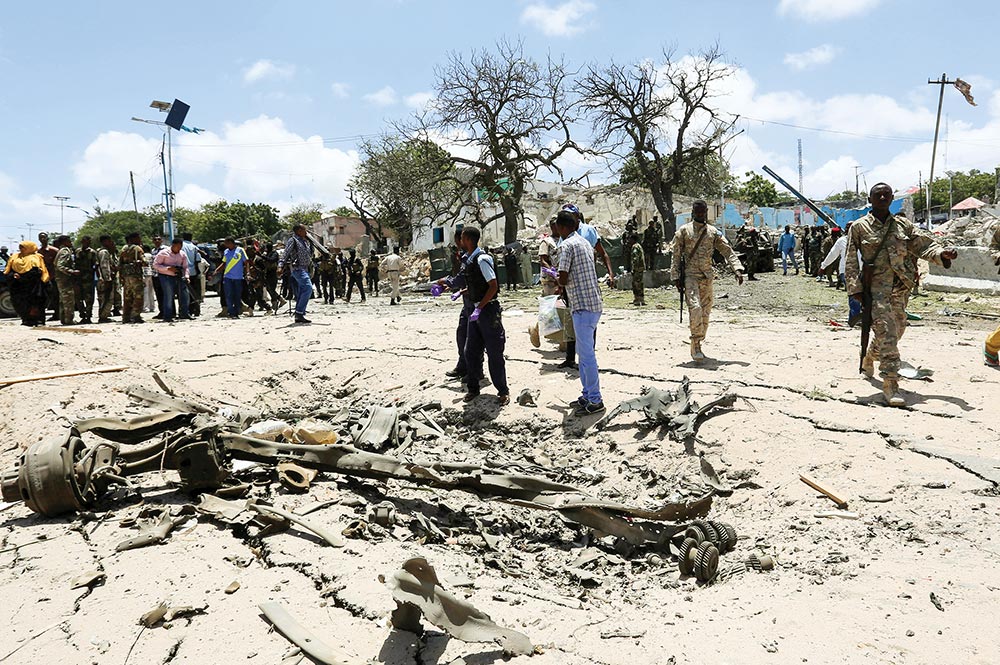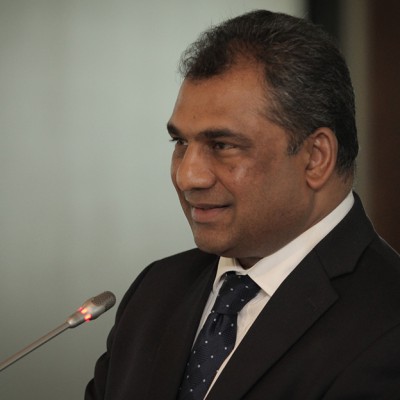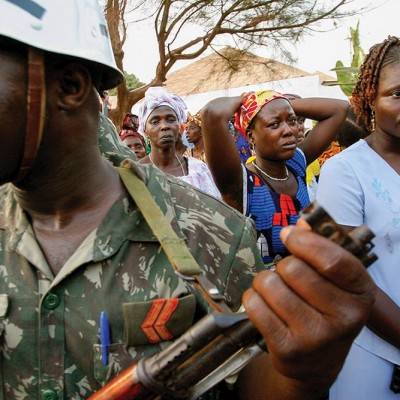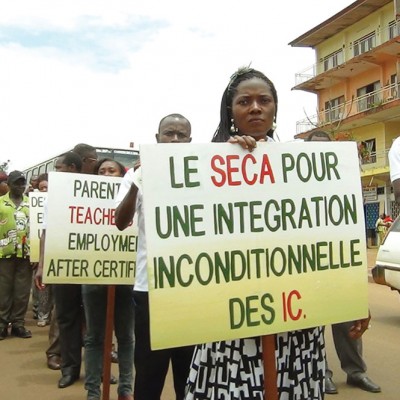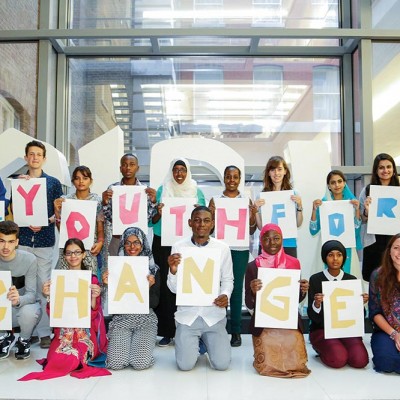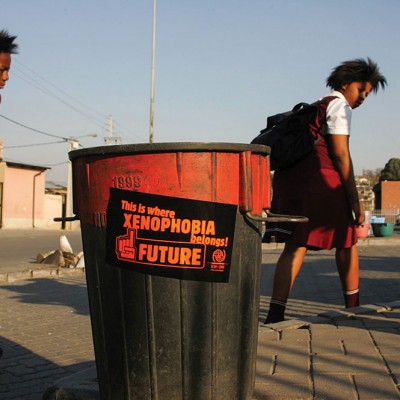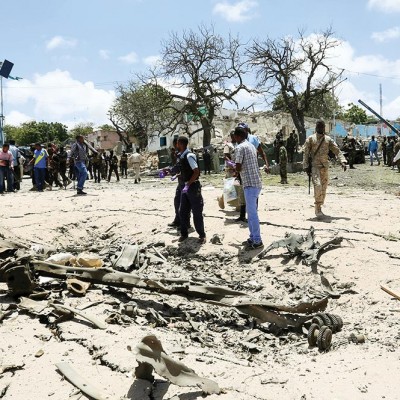Introduction
The rise in terrorism and violent extremism in Africa has created severe security threats as this growing phenomenon has resulted in death, destruction and instability in the countries and regions where terrorist groups operate. Social, political and economic factors can be attributed to the causes of this threat. In Nigeria, the actions of Boko Haram have left thousands of people dead and displaced. It has also made neighbouring countries susceptible to bombings and kidnappings. The same can also be said for Somalia, where al-Shabaab threatens to destabilise an already fragile state, impeding sustainable development and democracy. Whilst these and other groups are prevalent in the north, east, west and Horn of Africa, they have created a continental dilemma as they threaten the larger African political, social and economic security.
Coordinated and harmonised efforts to counter terrorism and violent extremism are underway among and between states, together with regional, continental and international organisations. These efforts include collaboration on border security, sharing intelligence, and the development of strategies and frameworks, such as the African Union’s (AU) Counter Terrorism Framework and the United Nations’ (UN) Global Counter-terrorism Strategy.

However, since the infamous 9/11 attacks in New York, military intervention has become synonymous with countering terrorism and violent extremism. In spite of this hard power approach, the threat is still very much prevalent. Military intervention has brought its own challenges, in the form of a high number of civilian fatalities and damage to infrastructure. This then begs the question: what would an alternate approach be to preventing and responding to terrorism and violent extremism that would minimise the high fatality rate and level of destruction?
This article first provides a brief overview of the network of extremist groups in Africa. It then outlines the frameworks that have been developed to respond to this threat. Third, the article examines the military interventions undertaken in response to the extremist threats thus far, with reference to Nigeria and Somalia. Fourth, the article explores alternate approaches to counter terrorism and violent extremism, with particular reference to Mali. This is followed by recommendations to adopt soft power approaches in countering these threats.
Network of Extremist Groups in Africa
The origins, manifestation and support of most extremist groups in Africa should not be seen in isolation – they stem from a vast number of factors, intermingled with allegiances and alliances that create a firm connection among them. This can be attributed to a common belief that most extremist groups share: the pursuit of a state that promotes Sharia law,1 devoid of Western influences and ideologies. In North Africa, terrorism and violent extremism can be traced back to the cold war, and to the veterans of the anti-Soviet Muslim Army, known as the Mujahideen. The Soviet Union’s withdrawal in Afghanistan saw many foreign fighters return to their countries of origin. In Algeria, the Armed Islamic Group – made up of foreign fighters and former members of the Mujahideen and its splinter faction, the Salafist Group for Preaching and Combat (GSPC) – were responsible for training individuals from Chad, Sudan, Libya, Mali and Mauritania in combat. The GSPC extended its operations, aimed at attacks on government and military targets, throughout southern Algeria, northern Mali and regions of Niger and Mauritania. It renamed itself al-Qaeda in the Islamic Maghreb (AQIM), after pledging allegiance to the global militant al-Qaeda organisation, and has been responsible for providing support and training to Nigeria’s Boko Haram.2
Another affiliate of al-Qaeda is al-Shabaab. This rise of the Islamic State in Iraq and the Levant (ISIL), more commonly referred to as the Islamic State (IS), has gained the allegiance of Boko Haram. This has resulted in many of its fighters travelling to Libya to provide support for the IS group. In 2014, Boko Haram surpassed IS as the world’s most deadly violent extremist organisation.3 The intensification of the Arab Spring, together with open borders and ungoverned spaces throughout the Maghreb and Sahel regions, have contributed significantly to the rise in transnational connections between extremist groups and the movement of fighters.4
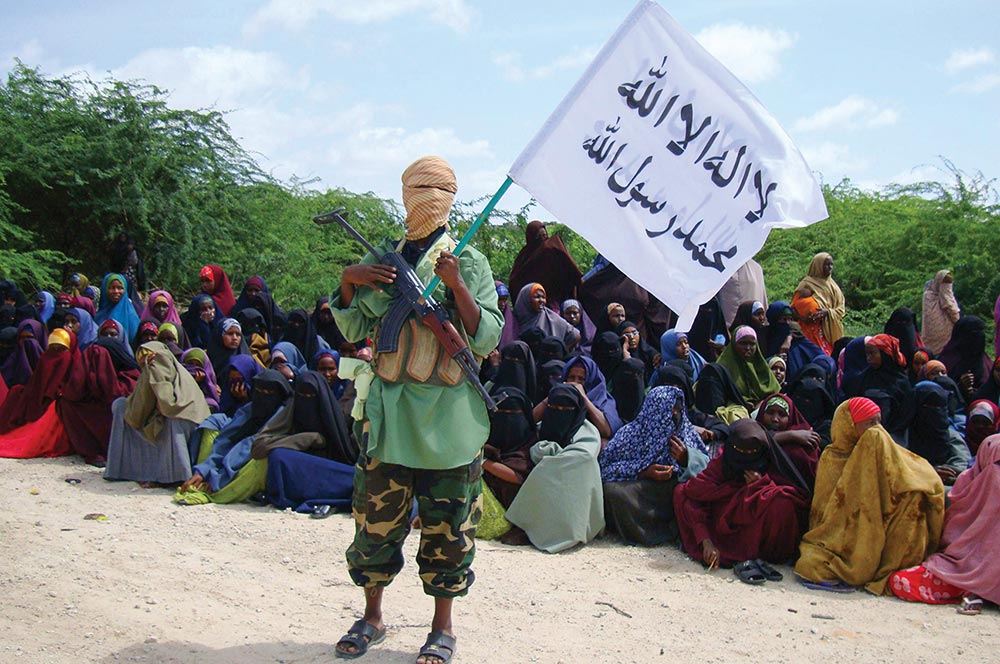
Boko Haram is responsible for over 10 000 deaths and for more than 1.5 million internally displaced persons across the nation.5 It is also responsible for burning down villages and has received widespread condemnation for mass abductions, such as the kidnapping of 276 Nigerian schoolgirls in April 2014.6 Al-Shabaab has launched attacks against government institutions, civilians, international organisations and the African Union Mission in Somalia (AMISOM). The group has become notorious for infiltrating local organisations to recruit and train Somali youth.
Frameworks to Address Terrorism and Violent Extremism in Africa
The 9/11 attacks in New York, regarded as a watershed moment in major international terrorism, led to a widespread military campaign against terror. In Africa, however, national, regional and continental efforts to address this growing crisis have been underway as far back as the early 1990s. For example, from 1992 onwards, the Organisation of African Unity (OAU) had adopted various counterterrorism frameworks that focused on the efforts of cooperation and recognising terrorism and violent extremism as criminal acts. These frameworks were refined and expanded after the transition of the OAU into the AU. In 2002, the AU adopted the Plan of Action on the Prevention and Combating of Terrorism, which embraces practical measures that substantially address Africa’s security challenges. It takes into consideration measures in areas such as police and border control, legislative and judicial measures, the financing of terrorism and the exchange of information. A key outcome of the 2002 Plan of Action was the African Centre for the Study and Research on Terrorism (ACSRT), which serves as a structure for centralising information, studies and analyses on terrorism and extremist groups. It further promotes the “coordination and standardization of efforts aimed at enhancing the capacity of member states to prevent and combat terrorism”.7 The AU’s Dakar Declaration Against Terrorism, adopted in 2004, takes cognisance of the links between terrorism, drug trafficking, transnational organised crime, money laundering and the illicit proliferation of small arms and light weapons.
Efforts in Preventing and Responding to Terrorism and Violent Extremism in Africa

Whilst the frameworks mentioned previously provide concrete guidelines on how terrorism and violent extremism should be addressed, in practice immediate interventions have been undertaken from a primarily military approach, and this has raised concerns about effectiveness. Whilst military intervention is necessary in some cases in the short term, the result of such intervention has resulted in the loss of lives, human rights violations, mass displacements and damage to infrastructure.
In Nigeria, a Multinational Joint Task Force (MNJTF) was established in 1998 between Nigeria, Chad and Niger as a strategic mechanism for combating transnational crimes in the Lake Chad region, prior to the threats by Boko Haram. The MNJTF became more active in 2012 when attacks by Boko Haram increased significantly. During the Paris Summit in May 2014, which was dedicated to addressing security concerns in Nigeria, it was decided that regional cooperation should be enhanced by means of “coordinated patrols and border surveillance, pooling intelligence and exchanging relevant information”.8 Member states of the Lake Chad Basin Commission (Cameroon, Chad, Niger and Nigeria) and Benin pledged troops to the MNJTF, and further support was received from the United States of America (USA), United Kingdom (UK) and European Union (EU). In January 2015, the AU conducted military operations to prevent the expansion of Boko Haram by approving a West African Task Force of 7 500 troops from Nigeria, Chad, Cameroon, Niger and Benin to fight the insurgent group.9 The MNJTF has made some progress as a result of these operations – the military has been able to recover some Boko Haram-held territories. But this has come at a price. Where military offensives took place, villages were evacuated, leaving people without their livelihoods and resulting in thousands of people being displaced. Most recently, in January 2017, six civilians were killed and over 200 injured when a Nigerian military jet mistakenly bombed a camp for displaced people.10 In addition, the cases of human rights violations are a serious concern and raise questions about the way in which the military has been operating. A report released by Amnesty International in June 2015 documented shocking levels of deaths in military custody, extrajudicial executions, torture, unlawful detention and arbitrary arrests by the military.11 In a survey undertaken by Afrobarometer, results showed that the Nigerian government has been criticised for a lack of coherent policy to combat Boko Haram, as well as for heavy-handed approaches taken by the Nigerian Police Service, the State Security Service and the military, creating a high level of distrust of the Nigerian government’s security forces. It should be noted that reprisal attacks have been orchestrated against the Nigerian military by Boko Haram, resulting in further deaths.
Somalia also presents an example of a primarily military intervention to counter al-Shabaab. In 2007, the AU’s Peace and Security Council (PSC) created AMISOM. Initially with a six-month mandate, the mission aimed to provide support to the transitional government of Somalia and to take all necessary measures appropriate and, in coordination with the Somali national defence and public safety institutions, to reduce the threat posed by al-Shabaab and other armed opposition groups,12 among other responsibilities. AMISOM has been working together with the Somali National Army (SNA) and through coordinated efforts during the course of 2014, gained back some towns initially seized by the insurgents. Whilst some progress has been made by AMISOM and the SNA’s counter-efforts, al-Shabaab continues its attacks, specifically targeting these military operations. Apart from the attacks and human rights abuses orchestrated by al-Shabaab, reports by Human Rights Watch indicate that government security forces, AU troops and allied militias have also been responsible for indiscriminate attacks, sexual violence, arbitrary arrests and detention.13
Alternate Approaches to Countering Terrorism and Violent Extremism
Given the challenges and hostilities that result from military intervention, alternate approaches must be considered – for example, a dual-track approach where mediation is used together with military intervention, or other soft power approaches. Mali is a good example of how it responded to the Tuareg rebellion.14 This rebellion, led by the National Movement for the Liberation of Azawad (MNLA), had the backing and support of Ansar Dine, an insurgent group operating in northern Mali that sought to impose Sharia law. In response to the crisis, the AU and the Economic Community of West African States (ECOWAS) adopted a dual-track approach: dialogue with the MNLA, as well as adopting military intervention. In December 2012, representatives of the Mali government met with both the MNLA and Ansar Dine, where a ceasefire was achieved. During these talks, both groups agreed to drop calls for independence and the imposition of Sharia law. It should further be noted that as a result of the mediation, legitimate demands by the MNLA were met to an extent, through the Algiers Accord, and the MNLA now has more autonomy in the northern region of Mali. Thereafter, French military intervention was implemented through United Nations Security Council Resolution 2071 to push back insurgent groups who continued to pose a threat to the country. The intervention was successful to some extent, but sporadic attacks continue to take place.
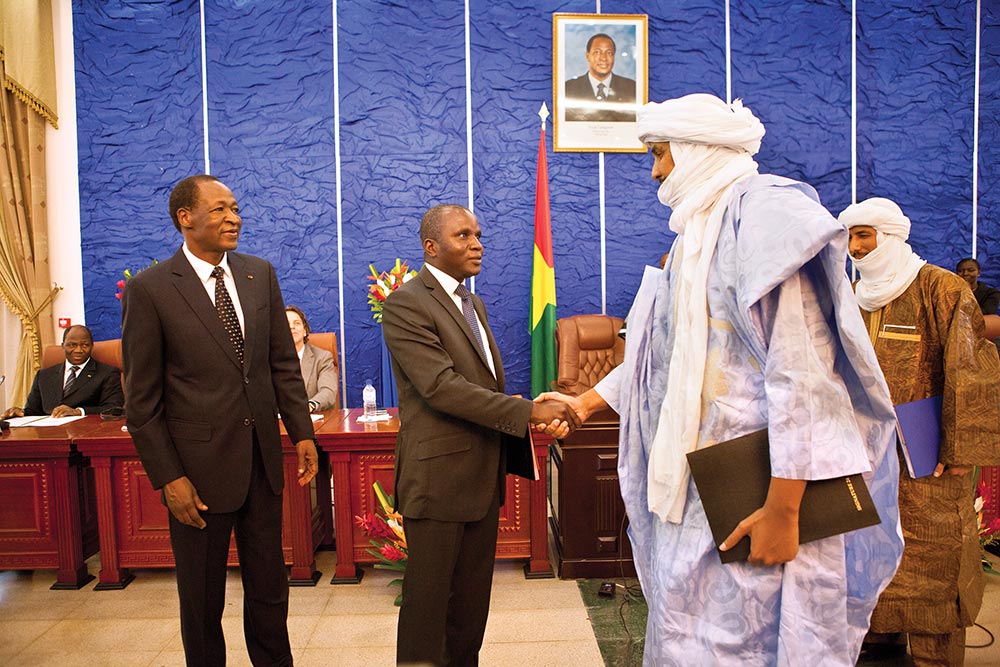
Due consideration should also be given to mediation attempts in Nigeria. Indirect peace talks were considered in 2012, during which Boko Haram considered a ceasefire. As Reuters reported: “It is the first time a ceasefire has been mentioned, so it is a massive positive, but given the lack of trust, a resolution is still a way off.”15 Talks resumed in 2015, when President Muhammadu Buhari of Nigeria met with Boko Haram members in an attempt to negotiate the release of the girls kidnapped in Chibok, with hopes that it would lead to further peace talks in the future. In 2016, however, speaking at a session to the UN General Assembly, Buhari indicated that he would only be willing to speak to Boko Haram when the extremist group’s leaders openly acknowledged their leadership of the groups, as well as their willingness to meet with the president.16 It is important to note that in Somalia, newly elected President Mohammed Abdullahi “Farmajo” Mohamed indicated his intentions to open talks with al-Shabaab, and should they refuse, this would potentially lead to a military intervention.17

One lesson that can be derived from the examples mentioned here is that attempts at dialogue and mediation produced some positive results. These attempts provided an opportunity for the perpetrating groups to present their grievances and have these issues addressed, to an extent, as in the case of Mali. The second lesson is that where mediation and dialogue took place, although it may have not resolved the conflict, the ceasefires prevented further violent conflict from occurring for a period of time.
Recommendations for Soft Power Approaches
Assessing the positive and negative consequences of military interventions has led to the consideration of alternatives, particularly the benefits of using soft power approaches.
Enhancing the use of mediation: Mediation is an effective soft power approach for resolving conflicts. It entails resolving a conflict through a political settlement, which calls for a process of inclusiveness that represents all sectors of society and those directly affected by the conflict. This would ideally include the representation of women, youth and perpetrators. An inclusive process is beneficial, as it provides vital information on how various groups are affected by the conflict. It also provides the opportunity for perpetrators to raise their grievances, thus providing insight on some of the root causes that lead to terrorism and violent extremism. A challenge of mediating with armed groups is that it may present the notion that the state is conceding to an armed group or showing weakness. However, mediation seeks to “merely acknowledge existence and exhibit a pragmatic will to end conflict, putting ideology and doctrine aside”.18 Mediation can also bring about a ceasefire, which may to a minimum degree suspend the immediate violence. As in the cases of Nigeria and Mali, where a ceasefire was considered following talks, the conflict may not have been resolved, but at least additional violent conflict was prevented.
Sharing of information and research to counter terrorism and violent extremism: The paucity of vital information still remains a challenge, as extensive research is required to analyse and understand threats and vulnerabilities in countering terrorism and violent extremism. Furthermore, states have a responsibility to understand differing interests among groups, and dialogue creates an opportunity to bring about this understanding. Tools and resources that promote research and the sharing of information are an important avenue to counter terrorism and violent extremism. A better understanding of the causes of this manifestation and the ways in which extremists operate will assist in finding creative approaches to countering such groups. The establishment of the ACSRT is a positive example in this regard.
Enhance the use of humanitarian diplomacy: It is important to note that engagement with armed groups “does not necessarily mean that there is an agreement to their demands. It may not guarantee a result, but it can present an opportunity to address and provide assistance to humanitarian needs.”19 This can serve two vital purposes: having access to those in need of humanitarian assistance where it is urgently required as a result of the conflict, and using this as an opportunity to open considerations for dialogue and as an entry point for mediation.
Strengthening the link between development and peace processes: Whilst mediation is one effective tool, there are other soft power approaches that speak to improving the political, social and economic pillars of society – which would, in effect, weaken the elements that promote insurgency groups. From a social perspective, there needs to be rehabilitation efforts for local and foreign fighters, so that they are reintegrated into society and do not feel the need to continue the cycle of violence. This is a necessary and essential countermeasure in preventing the continuation of terrorism and violent extremism. “While it is clear that some foreign fighters return home hardened and committed to violent extremism, others do not. They find themselves disillusioned by the gap between the propaganda and the reality of foreign conflict.”20
Collaborative efforts and engagement initiatives cannot be limited to the role played by continental and regional actors. It is important for states to take the lead in initiating engagements at a national level on ways in which to improve development processes, while also reaching out at a community level to gain a better understanding of the dynamics among communities. States have a responsibility to create an enabling environment that promotes employment for youth. The youth in fragile states, who often find themselves unemployed, are easily manipulated into joining and continuing the cycle of extremism. Thus, the state’s role in creating an environment in which sustainable development will be enhanced could possibly limit the influence of extremist groups from gaining youth support and more recruits.
Conclusion
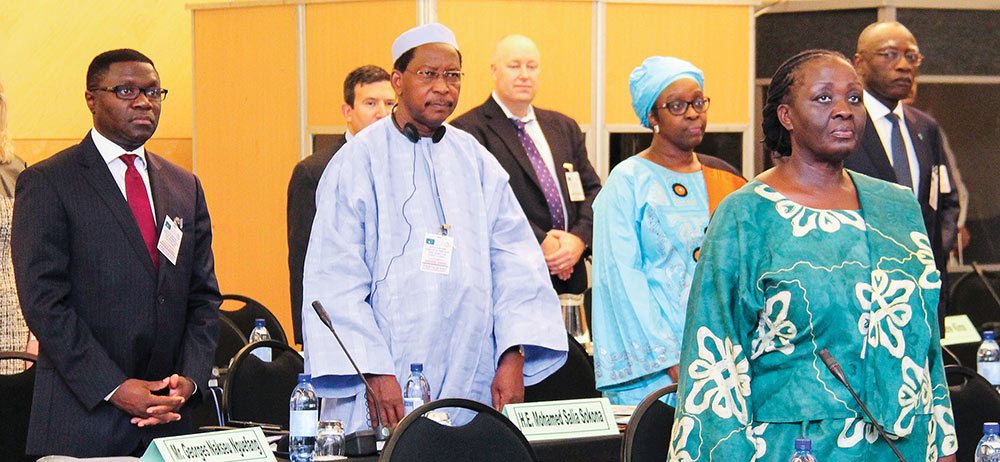
The factors that contribute to terrorism and violent extremism are complex, and the way in which this threat is countered can create further complications. Military intervention is a common solution to address terrorism and violent extremism. While it is an effective short-term solution, it has led to further hostilities, such as reprisal attacks, as well as a high death toll of civilians, mass displacements and damage to infrastructure. It is therefore essential to explore alternate approaches that can minimise human suffering while addressing the threat itself. The need to adopt soft power approaches is a long-term but necessary solution to resolve the threats of terrorism and violent extremism effectively. It should therefore be a priority for all stakeholders – from the international to the local levels – to collaborate and harmonise efforts to address this threat. Attempts at dialogue and mediation are vital soft power approaches that should be engaged to counter terrorism and violent extremism.
Endnotes
- Sharia Law is defined as “a code for living that all Muslims should adhere to, including prayers, fasting and donations to the poor. It aims to help Muslims understand how they should lead every aspect of their lives, according to God’s wishes”. BBC (2014) ‘What is Sharia and how is it applied’, Available at: <http://www.bbc.com/news/world-27307249> [Accessed 17 May 2017].
- Sharif, A. Tarek and Richards, Joanne (2016) ‘Towards a Continental Strategy for Countering Violent Extremism in Africa’, Available at: <http://peaceoperationsreview.org/thematic-essays/towards-a-continental-strategy-for-countering-violent-extremism-in-africa/> [Accessed 18 April 2017].
- Pisa, Katie and Hume, Tim (2015) ‘Boko Haram Overtakes ISIS as World’s Deadliest Terror Group, Report Says’, Available at: <http://edition.cnn.com/2015/11/17/world/global-terror-report/> [Accessed 17 May 2017].
- Sharif, A. Tarek and Richards, Joanne (2016) op. cit.
- Starr, Penny (2015) ‘Terrorist Group Boko Haram has Killed More than 10,000 People in Nigeria’, Available at: <http://www.cnsnews.com/news/article/penny-starr/> [Accessed 18 May 2017].
- BBC News (2016) ‘Nigeria Chibok Abductions: What We Know About the Missing Girls’, Available at: <http://www.bbc.com/news/world-africa-32299943> [Accessed 24 April 2017].
- ACSRT (2004) ‘About Us’, Available at: <http://caert.org.dz/About%20us.pdf> [Accessed 19 April 2017].
- European Parliament (2015) ‘African-led Counter-terrorism Measures against Boko Haram’, Available at: <http://www.europarl.europa.eu/RegData/etudes/ATAG/2015/551302/EPRS_ATA(2015)551302_EN.pdf> [Accessed 15 April 2017].
- BBC News (2015) ‘Boko Haram Crisis: African Union Backs Regional Force of 7,500 Troops’, Available at: <http://www.bbc.com/news/world-africa-31057147> [Accessed 18 May 2017].
- BBC News (2017) ‘Nigerian Air Strike Error Kills Dozens in Refugee Camp’, Available at: <http://www.bbc.com/news/world-africa-38654991> [Accessed 24 April 2017].
- Amnesty International (2015) ‘Stars on Their Shoulders, Blood on Their Hands’, Available at: <https://www.amnesty.org/download/Documents/AFR4416572015ENGLISH.PDF> [Accessed 18 April 2017].
- AMISOM (2007) ‘AMISOM Mandate’, Available at: <http://amisom-au.org/amisom-mandate> [Accessed 15 April 2017].
- Human Rights Watch (2017) ‘Somalia’, Available at: <https://www.hrw.org/africa/somalia> [Accessed 22 May 2017].
- The Tuareg Rebellion began in January 2012, when the Tuareg people who reside in north Mali began a campaign to fight the government for autonomy of the north. Tuareg separatists formed allies with the Islamist rebels during the 2012 rebellion, strengthening their attempts at seizing major areas in the north, including the city of Timbuktu.
- Reuters (2012) ‘Nigeria Starts Mediated Talks with Boko Haram’, Available at: <https://www.iol.co.za/news/africa/nigeria-starts-mediated-talks-with-boko-haram-1257424> [Accessed 4 April 2017].
- VOA (2016) ‘Nigeria’s Buhari Talks Boko Haram, Niger Delta Avengers, Corruption’, Available at: <http://www.voanews.com/a/nigeria-buhari-talks-boko-haram-niger-delta-avengers-corruption/3525823.html> [Accessed 24 April 2017].
- Huffington Post (2017) ‘Al-Shabaab: Should the Somali President Open Talks with the Terror Group?’, Available at: <http://www.huffingtonpost.co.za/2017/03/09/al-shabaab-should-the-somali-president-open-talks-with-the-terr/> [Accessed 24 April 2017].
- European Institute of Peace (2017) ‘Negotiating with Terrorists’, Available at: <http://eip.org/en/news-events/negotiating-terrorists> [Accessed 20 April 2017].
- Research Report (2016) ‘Silencing the Guns: Terrorism, Mediation and Non-state Armed Groups’, Available at: <https://accord.org.za/publication/silencing-the-guns/>
- The Conversation (2014) ‘Tough is Not Enough: Ten Smarter Ways to Counter Violent Extremism’, Available at: <http://theconversation.com/tough-is-not-enough-ten-smarter-ways-to-counter-violent-extremism-32690> [Accessed 20 April 2017].

